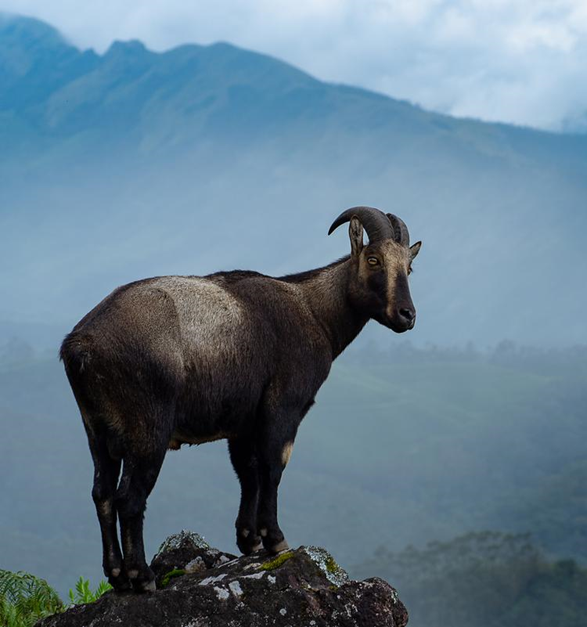Context:
Kerala and Tamil Nadu will jointly conduct a Nilgiri Tahr census from April 24 to 27, 2025. This effort aims to assess the population and distribution of the Nilgiri Tahr (Nilgiritragus hylocrius), a vulnerable species found only in the Western Ghats.
About the Survey:
The Nilgiri Tahr census is being conducted to commemorate the 50th anniversary of the establishment of Eravikulam National Park, which hosts the largest population of the species.
· The survey aims to generate scientific data on the population size, distribution, and genetic variation of the species, which will aid conservation planning and policy-making
· It will cover 265 census blocks—89 in Kerala and 176 in Tamil Nadu. Both states’ forest departments will coordinate the survey across protected and non-protected areas.
· The data will be collected using the bounded count method, which estimates population sizes based on systematic observations in specific locations. The survey will also use camera traps to capture images of the animals and pellet sample collection for genetic analysis.
· About 1,300 people, including experienced forest officials and trained wildlife volunteers, will participate in the census. The survey will take place in 20 forest divisions across Kerala, from Thiruvananthapuram to Wayanad.
· The field director of the Periyar Tiger Reserve, has been appointed as the nodal officer to oversee the project.
Significance of the Nilgiri Tahr:
The Nilgiri Tahr is an ecologically significant species, playing a crucial role in the montane grassland ecosystems of the Western Ghats.
· Due to habitat fragmentation, climate change, and human disturbances, the species is classified as 'Vulnerable' on the IUCN Red List.
· Conservation efforts, such as the upcoming census, provide critical insights that can aid in habitat restoration and long-term species protection.
Impact of the Census:
This synchronized census will provide valuable insights into the population trends and health of the Nilgiri Tahr. The findings will help in developing conservation strategies and policies to protect the species. The study will also strengthen cooperative efforts between Kerala and Tamil Nadu in wildlife conservation.
Conclusion:
By using scientific methods and teamwork, the Nilgiri Tahr census aims to improve conservation efforts. The results will guide future policies and habitat protection measures, ensuring the survival of this unique mountain species in the Western Ghats.








